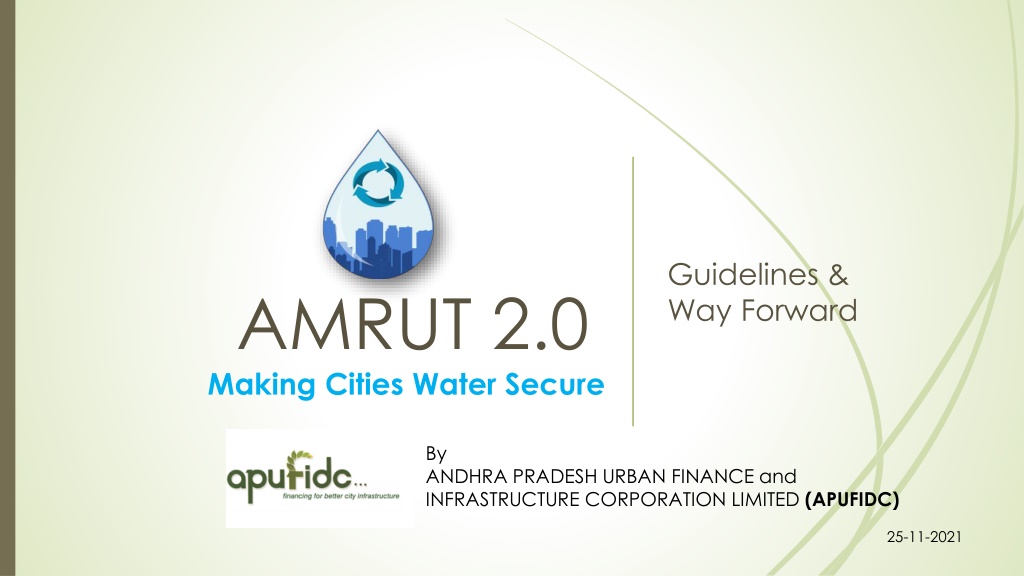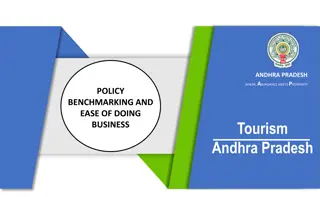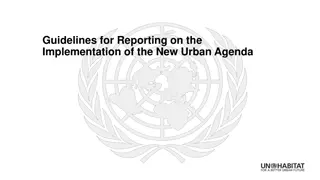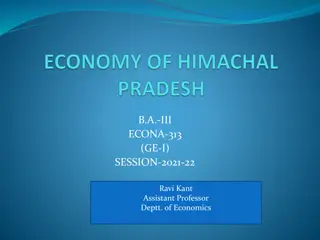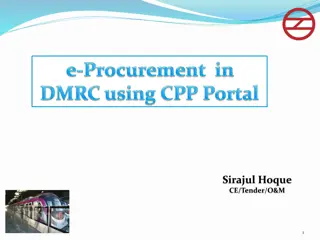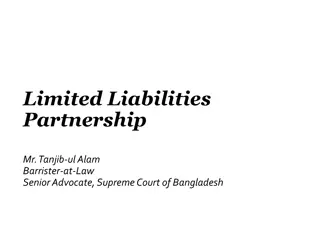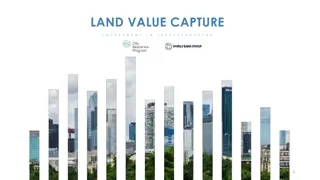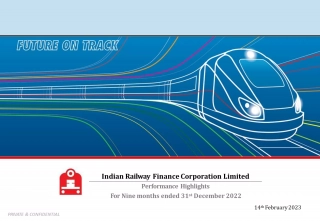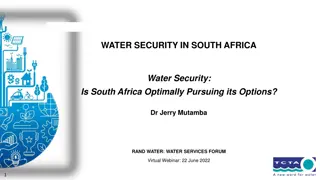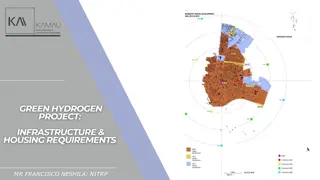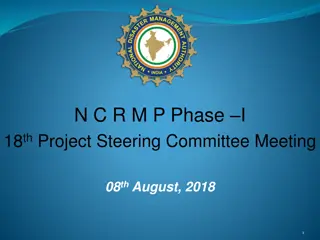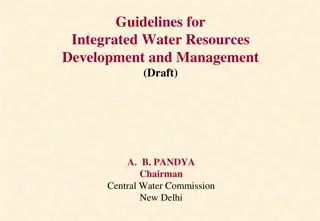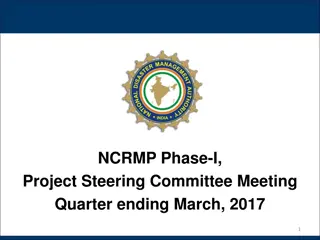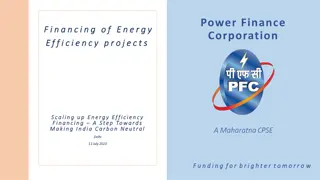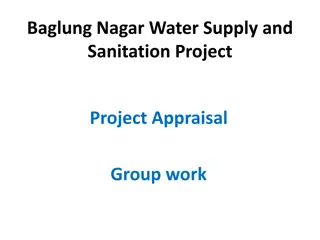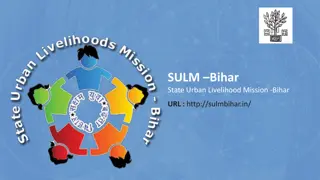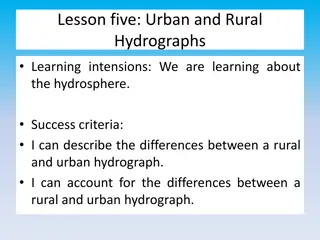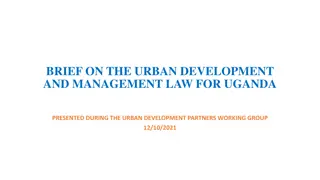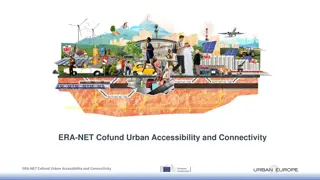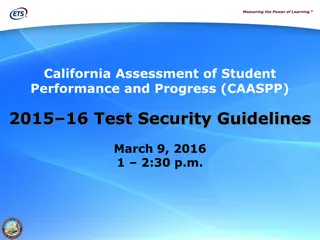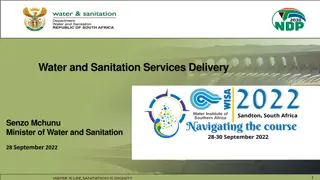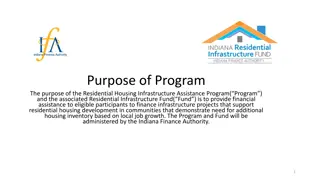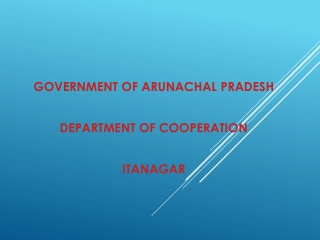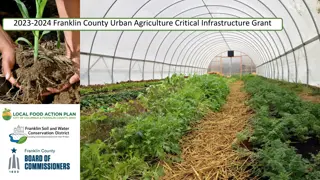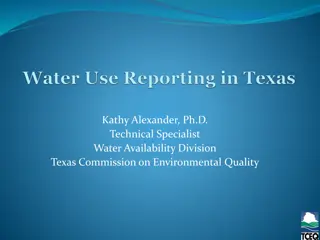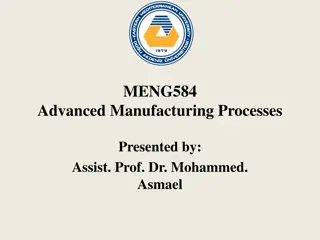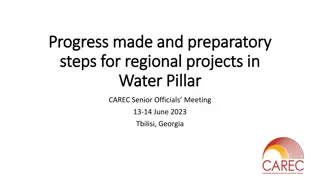Towards Water Security: AMRUT 2.0 Guidelines and Way Forward by Andhra Pradesh Urban Finance and Infrastructure Corporation Limited
Launched on October 1, 2021, the AMRUT 2.0 mission aims to ensure water security in all 4800 statutory towns and achieve 100% sewerage/septage management in 500 AMRUT cities. With a total outlay of Rs. 2,77,000 Crores, the mission focuses on paperless processes, outcome-based funding, and rejuvenation of ponds and lakes. An institutional mechanism and priority projects for informal settlements and low-income groups are also outlined for effective implementation.
Download Presentation

Please find below an Image/Link to download the presentation.
The content on the website is provided AS IS for your information and personal use only. It may not be sold, licensed, or shared on other websites without obtaining consent from the author. Download presentation by click this link. If you encounter any issues during the download, it is possible that the publisher has removed the file from their server.
E N D
Presentation Transcript
Guidelines & Way Forward AMRUT 2.0 Making Cities Water Secure By ANDHRA PRADESH URBAN FINANCE and INFRASTRUCTURE CORPORATION LIMITED (APUFIDC) 25-11-2021
Introduction Launched on 1st October 2021 by Hon. Prime Minister of India, in the spirit of AatmaNirbhar Bharat. Target to provide universal coverage in all 4800 statutory towns and 100% sewerage/septage management in 500 AMRUT cities. Mission has a reform agenda to enhance city water security, financial health of ULBs and ease of living of citizens. Mission period is till FY 2025-26 (provides financial support for ongoing AMRUT projects till FY 2022-23)
Key Features of AMRUT 2.0 100% Paperless Mission Outcome Based Funding (20:40:40) Release of funds through PFMS Public Finance Management System Online Monitoring of Implementation Verification of Implementation Status thru Engineering Colleges, Self Help Groups & Volunteers Focus on Rejuvenation of Ponds and Lakes 10% of Projects in PPP Mode (for Million Plus Cities) Technology Sub-Mission
Fund allocation The total indicative outlay for AMRUT 2.0 is Rs. 2,77,000 Crores including central share of Rs. 76,760 Crores for five years from FY 2021-22 to FY 2025-26. Allocation of Central share for various mission components will be as under: Central Allocation ( Cr) 66,750 5,340 # Mission component 1 2 3 Projects Incentive for Reforms (8% of project CA allocation) Administrative & Other Expenses (A&OE) for States/ UTs (3.25% of project CA allocation) Administrative & Other Expenses (A&OE) for MoHUA (1.75% of project CA allocation) Technology Sub-Mission (1% of project CA allocation) IEC Activities (1% of project CA allocation) 2,169 4 1,168 5 6 667 667 In addition to above, Ongoing AMRUT Projects will be funded with central assistance up to 31 March 2023
Institutional Mechanism A three-tier institutional mechanism has been devised for effective implementation of Mission as under:
Mission Implementation Ground Works MoU CWBP CWAP SWAP DPR Submission of CWBPs by ULBs Submission of Aquifer Management plan by AMRUT Cities before October 2023 SWAPs - First tranche to be submitted within 5 to 9 Months, Second tranche 12 to 16 Months & Third Tranche 24 Months
Priority Projects Households of informal settlements and low-income groups to be duly considered Providing universal piped water supply with household water tap connection Providing universal coverage of sewerage / septage management in 500 AMRUT Cites and promoting circular economy of water Rejuvenation of water bodies to augment water and enhance amenity value and development of green spaces
Funding for projects ULB Class Central Share For cities with less than one lakh population For cities with population one lakh to ten lakh (both included) 50% of the project funds by Centre ~33% of the project funds by Centre 25% of the project funds by Centre (excl. PPP Projects) Million Plus Cities Augment State Share from - raising municipal bonds, accessing capital markets, loans/credits, state grants and central finance commission grants etc. States/ UTs may avail loan from the funds earmarked by multi-lateral/ bilateral agencies like ADB, KFW, AFD and World Bank etc.
Andhra Pradesh Scenario ULB Class Central Share Number of ULBs For cities with less than one lakh population For cities with population one lakh to ten lakh (both included) 50% of the project funds by Centre 91 1/3rd of the project funds by Centre 30 25% of the project funds by Centre (except for projects taken up under PPP mode) For cities with population more than ten lakh 2 Total 123 Nellore & Anantapur Circle 15 Towns > 1 Lakh Population, 47 Towns <1 Lakh Population.
Release of Project funds (other than PPP) Central Assistance (CA) to the States /UTs has been divided in two components: Component 1: This will be released in three instalments of 20:40:40 as under: First instalment of 20% shall be claimed in three tranches against submission and approval of each tranche of SWAP Second instalment of 40% shall be claimed for those projects which have achieved 15% Physical & Financial progress, upon submission of UCs of A&OE and Reform incentives, upon submission of City Aquifer Management plan and submission of IRMA reports along with ATRs by the state Third instalment of 40% will be released entirely on achieving functional outcomes as committed in SWAP Contd..
Release of Project funds (other than PPP) (contd..) Component 2: Funding for connections provided in ULBs beyond the baseline as on 1st Nov 2021 will be provided as under: Funding at the rate of Rs. 3,000 per new household water tap connection provided in the ULBs beyond the baseline as on 1st Nov 2021 will be awarded. Similarly, funding at the rate of Rs. 3,000 for each new household sewer connection provided in all 500 AMRUT ULBs beyond the baseline as on 1st Nov 2021 will be awarded. Only those new connections which are not funded under AMRUT & AMRUT 2.0 will be considered for the above funding.
Reforms Mission has a reform agenda to enhance city water security, financial health of ULBs and ease of living of citizens. Reforms will be implemented in first four years. There are two types of reforms: Mandatory Reforms Needs to be implemented in first two years to be eligible for central 1. assistance from third year onwards Notifying property tax calculations containing guidance value/ circle rate along with provision for its periodic increase Notifying user charges for water supply and sewerage and resolution of its adoption by all ULBs Effective system for grievance redressal Contd..
Reforms (Contd..) 2. Incentive based Reforms Implementation of these reforms will be incentivized Reduction of NRW to <20% Recycle of treated used water to meet at least 20% of total city water demand and 40% of industrial water demand at state level Rejuvenation of water bodies 24X7 water supply with drink from tap facility in selected wards Development of green spaces and parks Water Conservation Ease of getting water and sewer connection Credit rating and issuance of municipal bonds Online municipal services system Electrical vehicle charging points in cities with population above 50,000 Augmenting double entry accounting system PPP Projects in non-million plus cities Involvement of community including women SHGs Governance Contd..
Reforms (Contd..) Effective O&M SOPs for water supply and sanitation infrastructure will be evaluated Energy efficiency of pumps and cleaning procedures for filters will be evaluated Energy Efficiency GIS Based master plans of class II towns with population of 50,000 to 99,999 Sub scheme Local Area Plan (LAP) and Town Planning Scheme (TPS) Sub Scheme Urban Planning Reform Incentive: Funds totaling to Rs. 5340 Cr has been earmarked as reform incentive 8% of the annual budget allocation will be given as incentive to states / UTs every year for achievement of Reforms from second year of Mission onwards States will submit Reform road map along with SWAP Incentive can be used in Mission cities on admissible components of the AMRUT 2.0 as additionality for achieving the objectives of Mission as an untied fund after approval from SHPSC
Tools for effective implementation of Mission: 1. Synergies: Mission covers all ULBs across country, many of them are very small with population below 10,000. In such cases, following synergies may be adopted for achieving intended outcomes: Rural Urban Synergy Urban Urban Synergy Synergy among Missions with common components with AMRUT 2.0 Capacity Building: To enhance the functional knowledge and improve the job- related skills of targeted groups, Capacity building among elected representatives, ULB functionaries, contractors & their staff and Citizens may be taken up by the states. Expenses under this category can be met from A&OE funds. Capacity building plan of state will be submitted by State along with A&OE Action plan 2. Contd..
Tools for effective implementation of Mission (Contd..) 3. IEC Campaign: In order to ensure extensive outreach of Mission and its objectives; Information, Education and Communication (IEC) will be undertaken. IEC will envisage to convert the campaign into a JanAandolan movement by ensuring community participation including women SHGs. IEC Tools Mass Media, Social Media Campaign, Targeted Marketing, Activations, Community Engagement and Exhibition/Melas
Technology Sub Mission To facilitate identification of innovative, proven and potential environment friendly technologies in the field of water & used water treatment, following major initiatives to be taken under Technology Sub Mission: Start-up's entrepreneurs Eligible startups (as defined in DPIIT) can apply to SMD along 1. with a brief proposal. Projects costing up to 20 Lakhs will be approved by State Water Start-up screening committee Projects costing more than 20 Lakhs will be approved by National Water Start-up screening committee Funding at 50:40:10 (Final 10% of Meeting Functional Outcomes) Shortlisting of projects should be completed with in six months of launch of mission Contd..
Technology Sub Mission (Contd..) 2. Technology Melas Mission will support innovative, low-cost indigenous technologies including equipment, through technology challenge and melas at National /State Level Light house Projects - National and International agencies / entrepreneurs will be encouraged to take-up lighthouse projects and demonstrate the results in water sector. Interested agencies can apply to SMD On recommendation of SMD, MoHUA will approve such projects Initially such projects are to be funded by concerned agency, however, on achieving the intended outcomes within Mission period, 20% of project cost restricted to 50Lakhs will be reimbursed to the agency by MoHUA 3.
Administrative and Other expenses (A&OE) A&OE will be fully funded by Central. Following are the admissible components that state can utilize A&OE funds : Capacity Building, Preparation of CWBPs, PMU/PIU PDMC & SMMU CMMU Preparation of DPRs Publication like e-Newsletter, guidelines, brochure etc. Display of the logo and tagline of AMRUT 2.0 prominently on all projects
AMRUT 2.0 Making Cities Water Secure Thank you!
